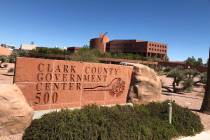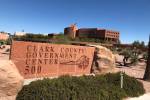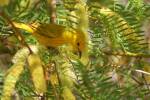Rare brain abscesses in children tripled in Southern Nevada in 2022
After the number of brain abscesses in kids tripled in Southern Nevada last year, a pediatric neurosurgeon flagged the increase to the Southern Nevada Health District.
“In a little over 20 years, I would see one to two cases a year,” Dr. Taryn Bragg, the Nevada neurosurgeon who worked on the cases, said Friday. “The numbers we were seeing in 2022 were higher than years prior.”
A brain abscess is a collection of pus, due to an infection or a head injury, that can become fatal as the swelling affects blood flow.
Cases are rare. In previous years, the Southern Nevada Health District said it had averaged five cases a year in children.
But last year, the district saw triple that number of cases — 17 total — in children, according to a health district advisory.
On Thursday, Dr. Jessica Penney, an Epidemic Intelligence Officer with the Centers for Disease Control and Prevention, presented the findings on brain abscesses at the Epidemic Intelligence Service Conference, according to reporting from CNN.
Bragg, who collaborated with Penney on the findings, said that all of the children with brain abscesses were experiencing severe and persistent headaches, fevers and concussive behaviors.
In 14 of the 17 cases, children underwent a craniotomy to drain the abscess, according to the health district. Some children had part of their skull temporarily removed to help with swelling or were hospitalized between two weeks to a couple of months, while all received antibiotic treatment, Bragg said.
Over half of the cases were in boys, the health district reported.
The health district wrote in its advisory that it had not identified any common exposures. It looked at factors like COVID-19 or vaccination status and no correlations were found, according to Bragg.
A spokesperson for the health district declined a request for comment Friday.
Still ‘incredibly’ rare
The Centers for Disease Control and Prevention also saw an increase in cases from the summer of 2021 through March 2022, but reported a drop in cases at the beginning of the pandemic.
But symptoms alone aren’t enough to diagnose a brain abscess, as it shares the symptoms of a cold — nasal congestion and a severe headache with fever — according to the Southern Nevada Health District’s advisory.
The health district said that brain imaging through a CT or MRI scan is important to properly diagnose kids.
SNHD recommended in its advisory that health care providers look for other common symptoms like nausea, vomiting, changes in personality or behavior, changes in speech, problems walking and seizures.
But brain abscesses are still rare, with the health district saying there were 0.5 cases for every 100,000 people.
In 2022, the CDC identified three children between the ages of 11 to 13 years old with a brain abscess caused by a bacterial infection in different parts of California. The CDC was able to identify the bacteria as S. intermedius, a type of Streptococcus known to cause brain abscess in children. This bacteria quickly generates pus, according to Bragg.
Bragg said the increases in Southern Nevada aren’t unique, citing other parts of the country that als0 reported increases.
“It’s still incredibly rare, the baseline,” she said. “Since the end of 2022 and early part of 2023, we’ve seen a decline.”
Contact Jimmy Romo at jromo@reviewjournal.com or call 702-383-0350. Follow @jimi_writes on Twitter.





























